Key takeaways:
- Fashion design mockups are crucial for visualizing concepts, allowing designers to experiment and refine their ideas without committing to physical materials.
- Mockups enhance communication between designers, clients, and manufacturers, ensuring clear understanding before production and helping to identify potential issues early.
- Utilizing tools like Adobe Photoshop, Canva, and Clo3D provides flexibility and depth in creating effective mockups that capture design intent.
- Feedback on mockups is vital for refining designs, as it opens doors to new perspectives and enhances the creative process through collaboration.
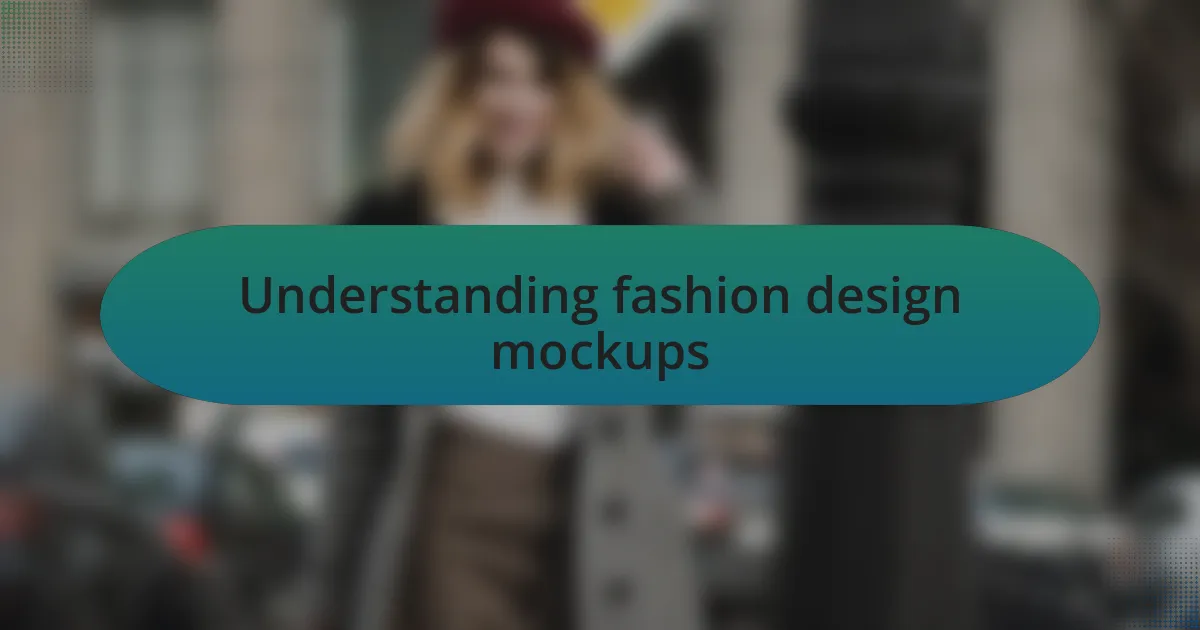
Understanding fashion design mockups
Fashion design mockups are essential tools that visually represent a designer’s concept before it comes to life. I remember the first time I created a mockup for a collection; seeing my designs on digital garments felt like a huge leap. It allowed me to step back and assess the color schemes and the overall aesthetics without the pressure of cutting any fabric.
At their core, mockups bridge the gap between imagination and reality, enabling designers to experiment freely. Have you ever wondered how many iterations a single design can go through before finalizing it? I often find myself refining elements in my mockups, which helps me make informed decisions before committing to physical materials.
Utilizing mockups does more than streamline the design process; it also adds an emotional layer to it. When I share my mockups with others, their reactions and feedback fuel my creative drive. This collaborative aspect can be incredibly rewarding, as it transforms a solitary pursuit into a shared journey of inspiration.

Importance of mockups in fashion
Mockups play a crucial role in fashion by allowing designers to visualize their concepts at an early stage. I vividly recall a time when a simple tweak in a mockup led to an unexpected but stunning color combination that I never would have considered otherwise. This kind of experimentation not only sparks creativity but can also lead to innovations that set a designer apart in a competitive landscape.
They also serve as a powerful communication tool between designers, clients, and manufacturers. I’ll never forget the moment I presented a mockup to a prospective client; their eyes lit up as they could finally grasp the vision I had been describing. This ability to convey ideas clearly can greatly enhance collaboration, ensuring everyone’s on the same page before production begins.
Moreover, mockups can help in identifying potential issues early on—saving both time and resources. I often find that what looks great on a screen doesn’t always translate well into fabric. By assessing these aspects through mockups, I can avoid costly mistakes and refine my designs, ensuring a smoother transition from digital concept to actual garment. Isn’t it reassuring to have that kind of control over the design process?
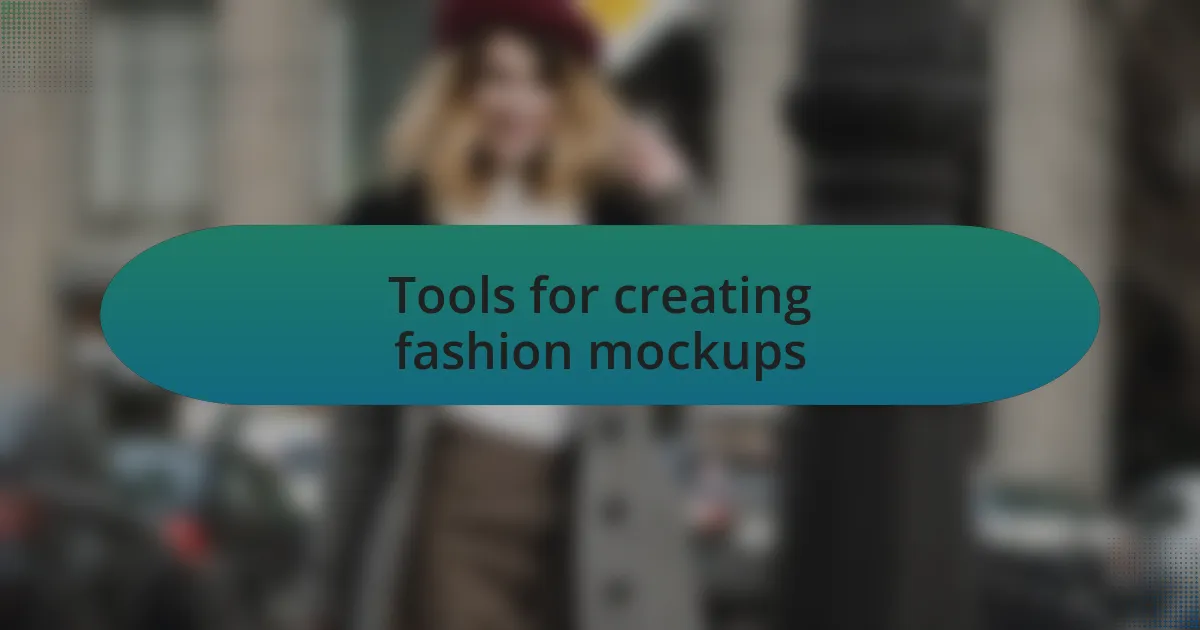
Tools for creating fashion mockups
Creating fashion mockups requires the right tools to bring your vision to life. One of my favorites is Adobe Photoshop. I remember the first time I manipulated a fabric texture onto a garment design; it felt like magic. The sheer flexibility of layers and effects allowed me to play around with colors and materials until I got a look that truly captured my artistic intent.
Another great tool is Canva, especially for those who may not be as experienced with complex software. I was amazed the first time I used it for a quick presentation; the templates made it easy to focus on design rather than getting bogged down in technical details. It’s a wonderful option for those ‘on-the-go’ moments when inspiration strikes, and you need to create something eye-catching quickly.
Lastly, 3D modeling software like Clo3D has revolutionized the way I approach mockups. When I first saw my designs come to life in three dimensions, I couldn’t help but feel giddy. It adds a new layer of depth that flat images just can’t provide. Have you ever wished you could walk around your design or see how it moves? That’s what this tool offers, allowing for a more immersive experience in the design process.
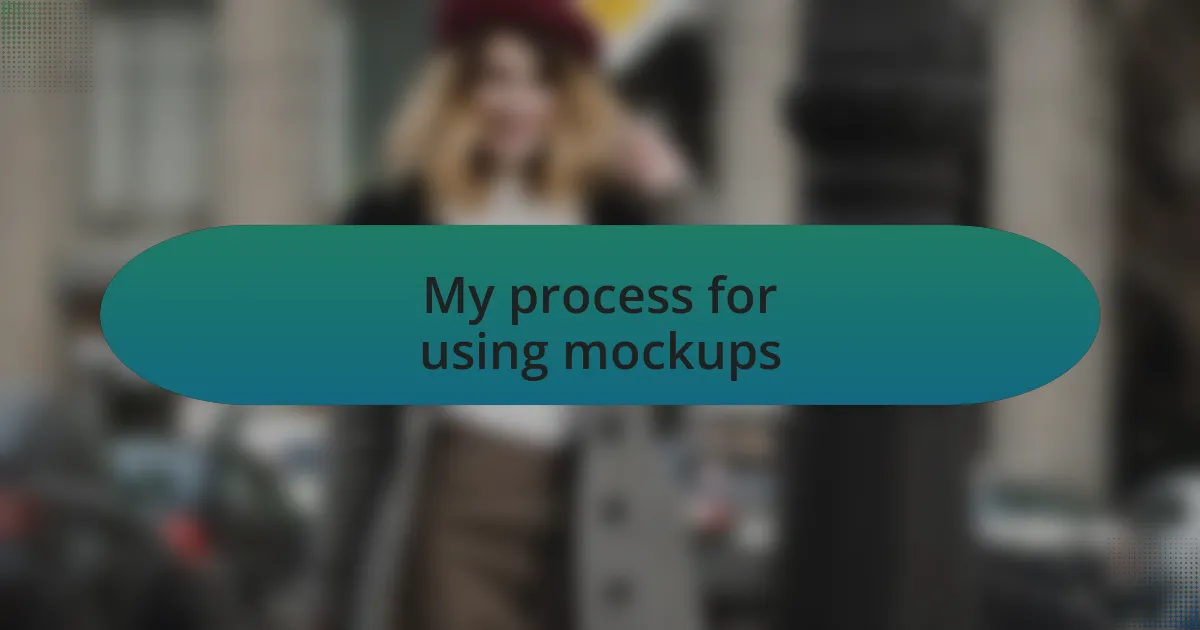
My process for using mockups
When it comes to incorporating mockups into my design process, I start by selecting a base template that resonates with my design’s aesthetic. I find this stage exhilarating; it’s where the potential of my concept begins to unfold. For instance, on a recent project, I chose a stylish t-shirt template that I could visualize on my audience—suddenly, my ideas felt tangible.
Next, I dive into customizing the mockup to reflect my unique vision. This step is crucial because it’s not just about overlaying my designs; it’s about storytelling. I vividly recall spending hours perfecting a mockup for a collection inspired by nature. I layered different textures and colors until the essence of the outdoors was mirrored in my fabric choices. Isn’t it fascinating how a visual can convey so much emotion?
Finally, I present my mockups to peers or clients for feedback, which is always an eye-opening process. Each response helps refine my designs, unveiling perspectives I hadn’t considered. I remember feeling a rush of excitement when a client shared how a particular mockup evoked nostalgia for their childhood. That moment reminded me that mockups aren’t just technical tools; they’re gateways to shared experiences and emotions in fashion design.
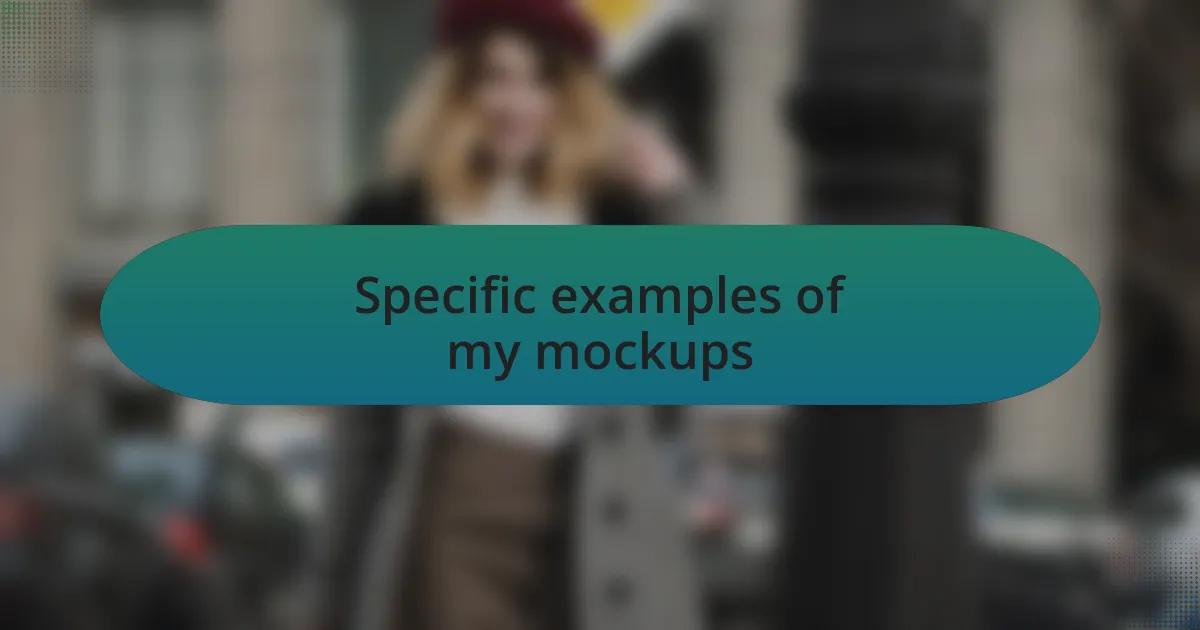
Specific examples of my mockups
One of my favorite examples of using mockups came when I was working on a handbag collection. I chose a sleek mockup that showcased not just the bag but also its accompanying accessories. As I adjusted the colors and added branding elements, I felt a sense of pride seeing my vision come together. Doesn’t it make a difference when you can visualize how the entire ensemble interacts?
Another memorable moment was when I created a mockup for a summer dress. I focused on the fabric’s flow and movement by layering my designs onto a model in a dynamic pose. I can still recall the thrill of seeing the dress animated, almost as if it were ready for the runway. Isn’t it amazing how a digital representation can give life to an inanimate object?
Lastly, I once incorporated a mockup of an entire lookbook layout, which included not just the clothing but also the styling and photography concepts. This was both challenging and rewarding—balancing elements like typography and spacing was intricate. When feedback rolled in, I felt a rush of validation as everyone resonated with the mood I was going for. Isn’t feedback like a creative spark that can propel us further in our journey?
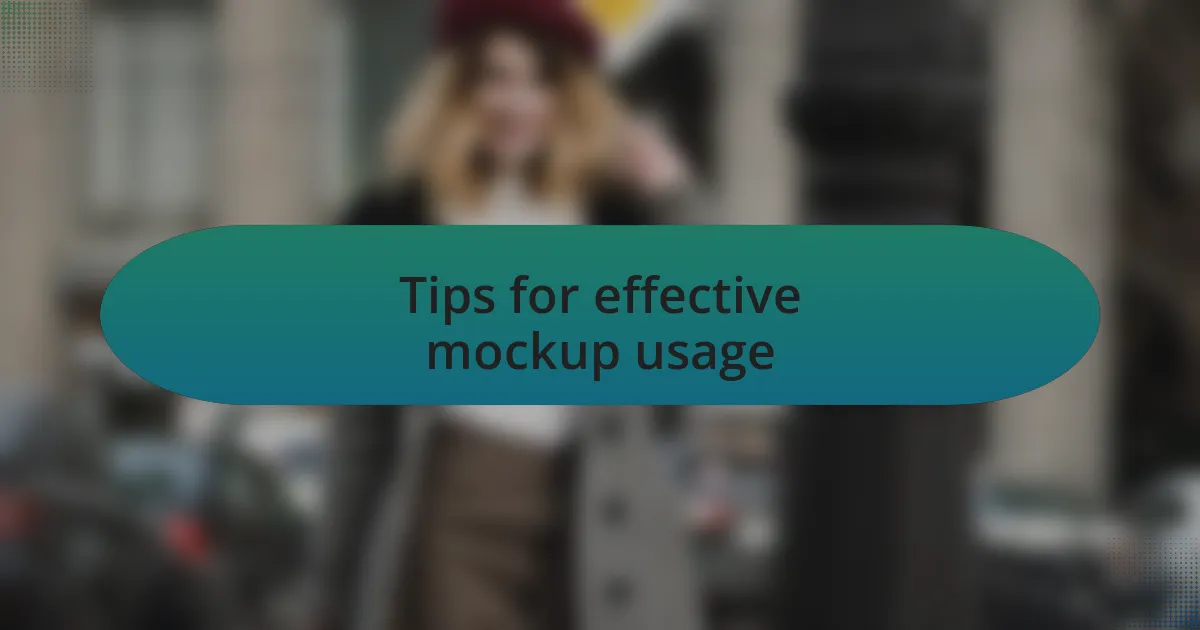
Tips for effective mockup usage
When using mockups, clarity is key. I’ve learned to choose designs that highlight the unique features of my pieces—like the texture of fabric or the intricate details of a stitch. Whenever I present my work, I focus on what tells the story best. Have you ever noticed how a well-chosen background can elevate the whole vibe of your design?
Another tip is to keep things versatile. I often create multiple versions of a single mockup to explore various perspectives. For instance, when I designed a denim jacket, I mocked it up in different settings—casual outdoor scenes, urban backdrops, and even chic indoor spots. This approach allows me to see how the design interacts with different environments. Who knew that the setting could influence a viewer’s interpretation so much?
Finally, I recommend seeking feedback early in the process. I remember sharing a mockup with a small group of fellow designers before a big reveal. Their fresh eyes spotted things I hadn’t noticed—like a color clash that could distract from the overall look. Isn’t it fascinating how collaboration can spark new ideas right when you need them?